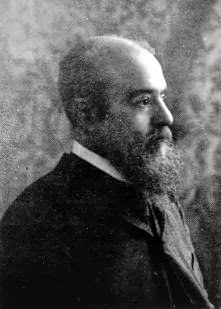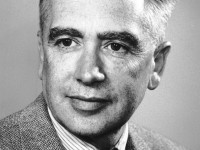
Vilfredo Pareto (1848 – 1923)
On July 15, 1848, Italian engineer, sociologist, economist, political scientist and philosopher Vilfredo Federico Damaso Pareto was born. He made several important contributions to economics, particularly in the study of income distribution and in the analysis of individuals’ choices. The Pareto principle was named after him and built on observations of his such as that 80% of the land in Italy was owned by 20% of the population.
“The assertion that men are objectively equal is so absurd that it does not even merit being refuted.”
– Vilfredo Pareto, Manual of Political Economy (1927)
Vilfredo Pareto Background
Vilfredo “Fritz” Pareto was born in Paris, France. His parents were Marquis Raffaele Pareto, a noble Italian emigrant and comrade-in-arms of Mazzini from a Genoese merchant family, and the Frenchwoman Marie Méténier. His name Vilfredo Fritz was given to him in allusion to the German Revolution of 1848/49. The Pareto family moved back to Northern Italy in 1858. Pareto was well educated and attended the Polytechnic University of Turin, becoming an engineer in 1870. His dissertation was entitled “The Fundamental Principles of Equilibrium in Solid Bodies“. His later interest in equilibrium analysis in economics and sociology can be traced back to this paper. Pareto worked first for a railway company, then for an ironworks. Pareto’s interests in economy evolved early and Pareto became an economics lecturer in Florence and was known to be a very political person, often irritated with the government’s economical regulations.
The Pareto Principle
In 1893 he was appointed to the chair of economics at the University of Lausanne. There he succeeded Léon Walras, who had a strong mathematical orientation. There he became a co-founder of welfare economics. In 1896, Pareto discovered that the distribution of income does not follow a normal distribution; rather, he recognized that it is usually skewed to the right. During his research, he began observing the property distribution among the population in Italy. As a result, he noticed that 20 percent of the population owned about 80 percent of Italy’s total property. The engineer Joseph Juran later found Pareto’s publications and made these findings famous as the Pareto principle. Juran generalized the principle through saying that 80 percent of the effects come from 20 percent of the causes. Somewhat related to the Pareto principle is the Pareto efficiency, which states that in the allocation of resources it is impossible to make any one individual better off without making at least one individual worse off, which was also found in Pareto’s research works.
The Mind and Society
Pareto’s presumably best known work was published in 1916, and titled The Mind and Society. In it, the scientist presented the sociological cycle theory, meaning that all events and stages of society and history are generally repeating themselves in cycles. Also, he divided the elite (as a social class) into two groups, one being the conservative and the other being promoters of change. Pareto found, that in society, both groups pass on the power constantly. The book was once named as one of the most important ever written and let Pareto’s reputation grow radically.
Controversial Economic Views
Pareto’s economic views kind of disagreed with those of the Italian government back then. He believed in free trade and understood economics as mostly mathematical sciences. Pareto’s criticism of ideological phenomena has received much attention. He distinguishes between six residuals (inductively determinable psychological motivation complexes) of an action, which can no longer be split up, and derivatives (apparent logical explanations of an action). He was part of the famous Neoclassical movement. His approaches to the general equilibrium theory were influenced by Edgeworth’s indifference curve. Pareto gave the first presentation on the Edgeworth-Box, a trade-off box, and changed microeconomics critically. His Pareto-optimality changed the way welfare could be measured more precisely, and also in concerns of game theory, he made significant improvements.
From 1898 Pareto turned to sociology. In 1900 or 1901 he moved to Céligny on Lake Geneva, where he passed away on 19 August 1923, at age 75.
At yovisto, you may enjoy a video lecture by Professor Ian Shapiro at Yale University on how the transition from Classical to Neoclassical Utilitarianism went through. To do so, he emphasizes the roles of important economists like Vilfredo Pareto, Francis Ysidro Edgeworth and John Stuart Mill.
Pareto Distribution & Price’s Law | Dr. Jordan Peterson, [9]
References and Further Reading:
- [1] Vilfredo Pareto: A Biographical Portrait
- [2] Excerpts of The Mind and Society
- [3] Vilfredo Pareto: A Concise Overview of His Life, Works, and Philosophy, by Fr. James Thornton
- [4] Vilfredo Pareto, The Mind and Society, Vol. IV, New York: Harcourt, Brace and Company, 1935.
- [5] Vilfredo Pareto, The Mind and Society, Vol. III, iVol. IV, London: Jonathan Cape, 1936.
- [6] Livingston, Arthur. “Vilfredo Pareto: A Biographical Portrait,” The Saturday Review, 25 May 1935.
- [7] Parsons, Talcott. The Structure of Social Action, The Free Press, 1949.
- [8] Vilfredo Pareto at Wikidata
- [9] Pareto Distribution & Price’s Law | Dr. Jordan Peterson, The Art of Trading @ youtube
- [10] Timeline of Vilfredo Pareto via Wikidata






Pingback: Whewell’s Gazette: Year 3, Vol. #48 | Whewell's Ghost